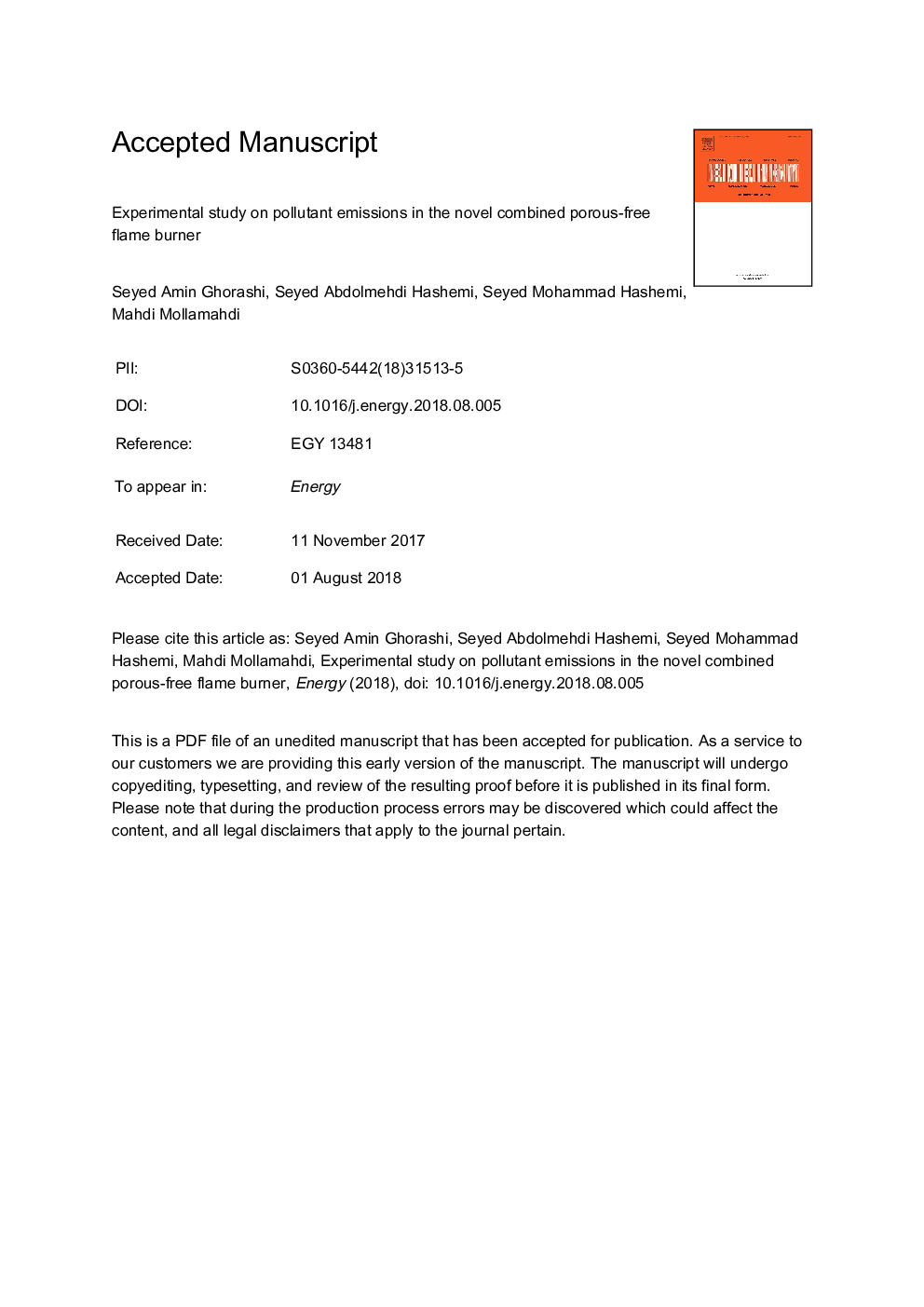| Article ID | Journal | Published Year | Pages | File Type |
|---|---|---|---|---|
| 8070786 | Energy | 2018 | 28 Pages |
Abstract
This study intends to measure the pollutant emissions in the novel combined porous-free flame burner and compare it with porous burner experimentally. In this regard, a comparison of the porous-free flame burner and porous burner is done and the effect of the diameter of the hole that is created at the center of the porous medium is studied. In the following, the effects of pore density of the porous medium, firing rate and porous medium material on pollutant emissions are analyzed. The results show that CO concentration in the porous-free flame burner is lower than that of the porous burner and that an increase in the central hole diameter leads to a decrease in CO emission. Furthermore, as the pore density of the porous medium increases, CO concentration increases and for a higher firing rate, CO emission decreases. Also, when the Al2O3 porous medium is used, CO concentration decreases compare to that of SiC porous medium. Measuring NOx emission shows that NOx concentration changes only with varying the equivalence ratio and other parameters have no significant effect on NOx emission.
Related Topics
Physical Sciences and Engineering
Energy
Energy (General)
Authors
Seyed Amin Ghorashi, Seyed Abdolmehdi Hashemi, Seyed Mohammad Hashemi, Mahdi Mollamahdi,
